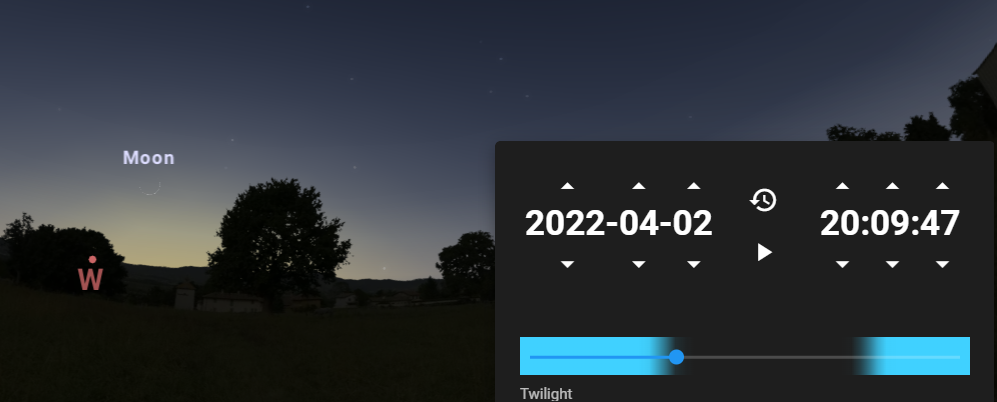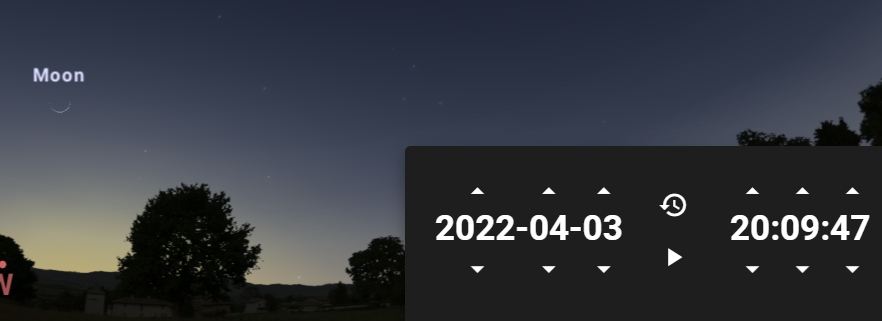The version used is KJV
Disclaimer: This is a journey and my current snapshot of my learnings on this topic. As I start to learn about His stars and wandering stars in the firmament, I might add more to this. But for now, the work is using moon cycles and sun, the lesser and greater light that Yah gave us in Genesis 1:16.
Why this
Although I could follow any of the standard calendars from ministries, I wanted to make sure I understood how to do this from first principles, instead of generally accepting some one else's. I believe, the instructions given by our Creator Yah is simple enough for farmers and the dispersed nations to observe the sabbaths in their appointed times.
Since Yah in Genesis 1:14, states He gave us the lights in the firmament of the heaven to divide the day from night and for a signs and seasons, I feel its my responsibility to do this using the tools He has given me.
Therefore, I want to make an attempt to do the best I can to discern the cycles that Yah has established for times and signs. He has blessed us with the tools, although I still have a long way to learn about the mazzaroths and the broader celestial objects used also for showing His appointed times and signs, I want to start with what I am able to for now.
If you are following a camp's calendar, then please by all means gather and partake of the feasts accordingly. This post is not to convince anyone of anything, other than a documentation for how I am discerning the beginning of the month.
Background for New Month
Genesis 1:14 states that the lights in the sky is given for signs and seasons - seasons here is both seasons of summer winter etc as we know it and also the appointed times, a specific term used for the feasts of Yah.
Following Genesis 1, we start our day during sunset, in the evening. The elapse day is from sunset to sunset and not from midnight to midnight.
The beginning of the month is when I sight the sliver of the moon following the renewal of the moon (new moon day, when the sky was dark without any moon). 1Kings 6:38 uses the word yerah for month, which is the same word for moon. This is one way we know moon was used to demarcate months.
At this point, my belief is that its the sighting of the first sliver that announces the beginning of the new month and not the absence of moon. If I was a farmer in the days of old, I would count the moon cycle and await the showing of the sliver (majority of the moon dark in the left, with a small lighted portion on the right) just above the sun set for few hours. This means, I need to be diligent during the renewing of the moon cycle to watch for this sign, to announce the new month, by blowing the shofar, Psalm 81:3.
What if its a cloudy day? This is where we have a network of believers as part of the ekklesia who might all do it from their location. What if its cloudy for several days and in all of the lands? Then the best alternative I can see if to diligently seek during sunset or dusk and if the growing sliver is spotted then based on the size, we might know what day it is now, as we missed several days due to cloudy skies.
This means that I am not of the belief that I can just compute the start of new month, is the day the almancs say its newmoon, but the days following it, when the visual sighting occurs by men.
Why not go with Israel's sightings
Although I will use several friends sites who post the sighting of the new moon in Israel, at this point, I believe that I am to try to observe this in the land Yah has blessed me with. This is based on Paul's broadening of the 5th commandment of promise in Ephesians 6:3 and the general teachings of our Messiah, as prophesied we will be worshipping the Most High in truth and spirit and not in a specific place. This also justifies the fact that the gospel spreads to the corners of the world. Therefore until the New Jerusalem comes, I will look for signs from the land in the Ozarks, that Yah has placed us in for now.
Algorithm for calling the new month
I use calculations (written in Python) using the Skyfield library, to do the following (note that the model this library uses is heliocentric, and I believe a geocentric model using that of Ptolemy will provide similar results, may be one day I will do that when I have more time):
- Function0 that calculates, the position of earth at sunset for a given day and location, and the visible moon based on the percentage of moon illuminated by sun for earth to see at this position, for a given day and location.
- Function1 that crawls thru all the days of the month in a year (these we use Gregorian as that is what we have now) and calculates using Function0 the % of moon visible to us in Ozarks and when it hits between 1-10% I remember the days
- Function2 uses the days from Function1 and narrows it down to the new moon calculation from the Almanac, which is either the same day or 1 or 2 days following the new moon.
- I use these narrowed down days from Function2 to use a sky view program to see the sliver of the moon, if the UI shows the sliver before moon disappears, then I note that day as a possible start to the new month
- Since all of the programs and tools are using man made models and could be prone to error, the new month is not declared by blowing of the shofar, until I sight the sliver on the day that I landed on in step 4. This means I have to deal with uncertainty of clouds, other commitments keeping me from being outside and such. I also have few friends who sight and report back in the Ozark area.
Hebrew New Year in 2022
As of last week, there have been few reports of barley in abib from around Ozarks as well as the report from Israel of the wild barley being in abib. This means, the next sliver we spot of the moon, following newmoon will be the beginning of the new Hebrew calendar year. HalleluYah!
Using the current calculations (applying the algorithm above), I am calling for the first month of this year to start on April 2. But if the sliver is unable to be spotted (as has happened to me in past), we wait to spot on April 3.
Sky per the program on April 2 evening

Sky per the program on April 3 evening

If April 2 is the sliver sighted and we blow the shofar,
- then Passover is to be celebrated April 15th evening, with 16th daytime being 7th day sabbath and
- Feast of Unleavened begins sundown on 16th.
- The first high sabbath then will be 16th eve - 17th eve and
- the second high sabbath for the feast will be 22nd eve - 23rd eve and end of the feast
But for whatever reasons, April 3 is the evening the sliver sighted and we blow the shofar,
- then Passover is to be celebrated April 16th evening, with 17th daytime being the first day and also preparation for the feast and
- Feast of Unleavened begins sundown on 17th.
- The first high sabbath then will be 17th eve - 18th eve and
- the second high sabbath for the feast will be 23rd eve - 24th eve and end of the feast
This above example demonstrates the concept of waiting on the LORD as I started to explore that for the last month or so.
Blessings in Yeshua's name, the full calendar coming soon...